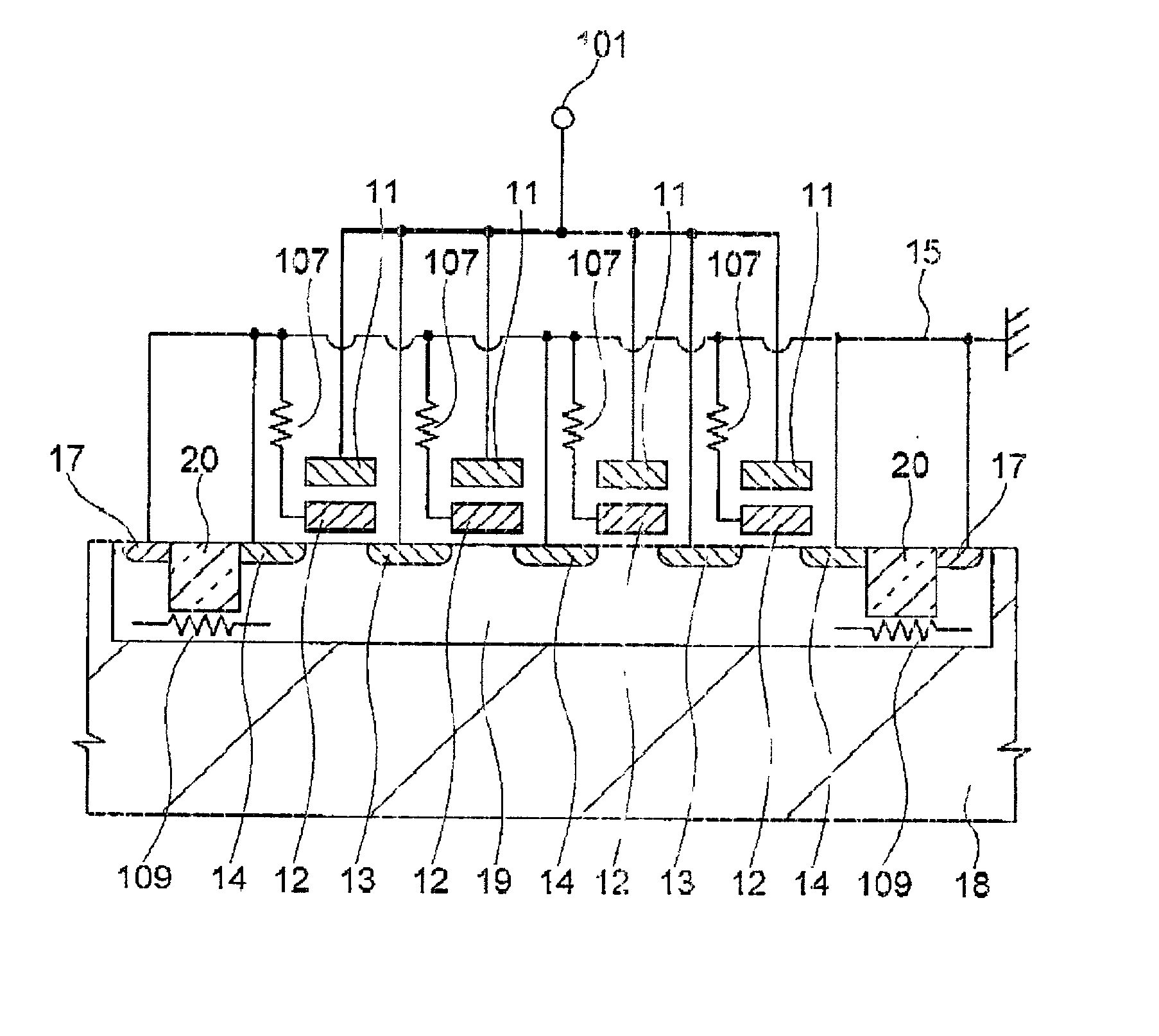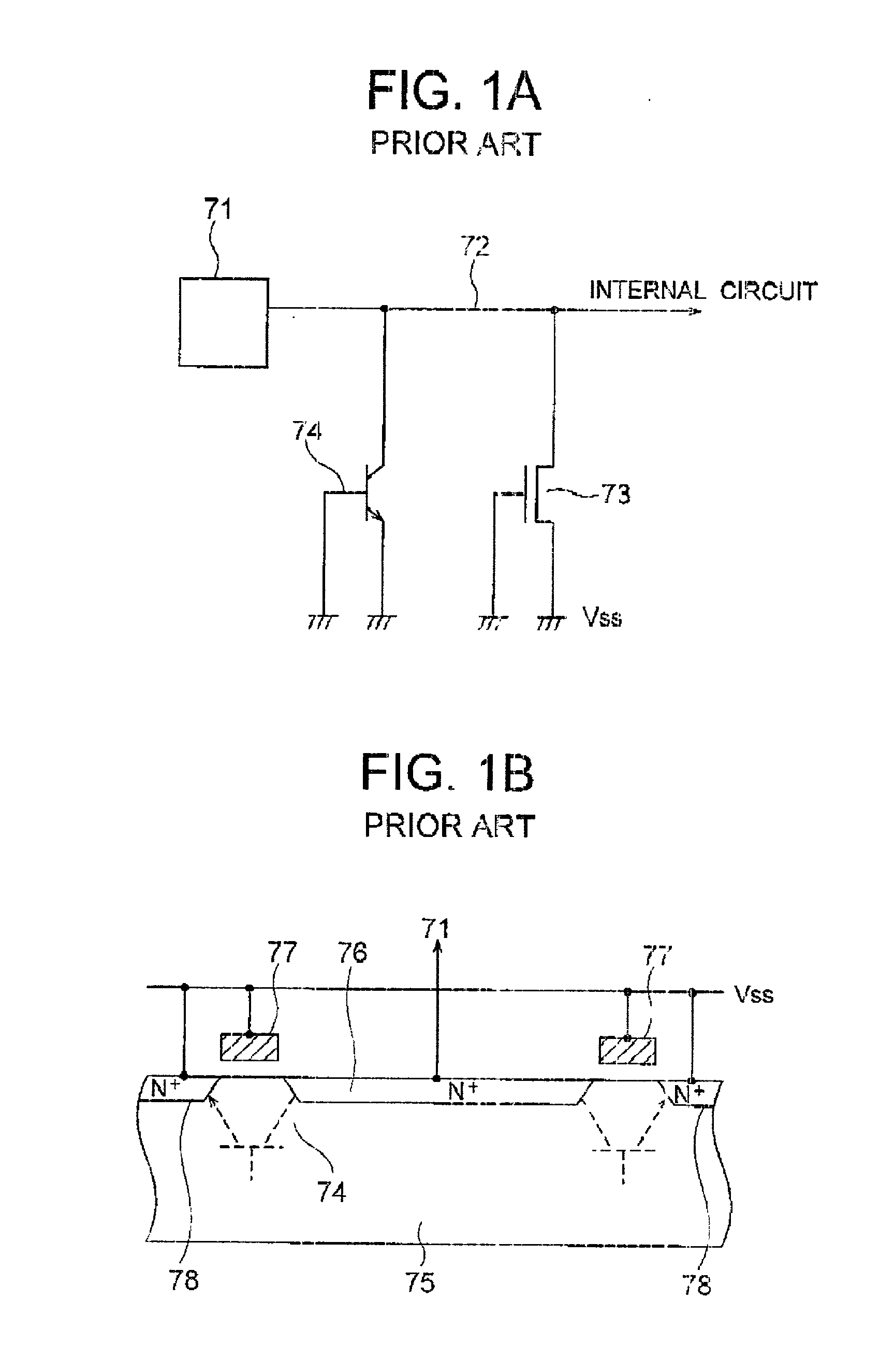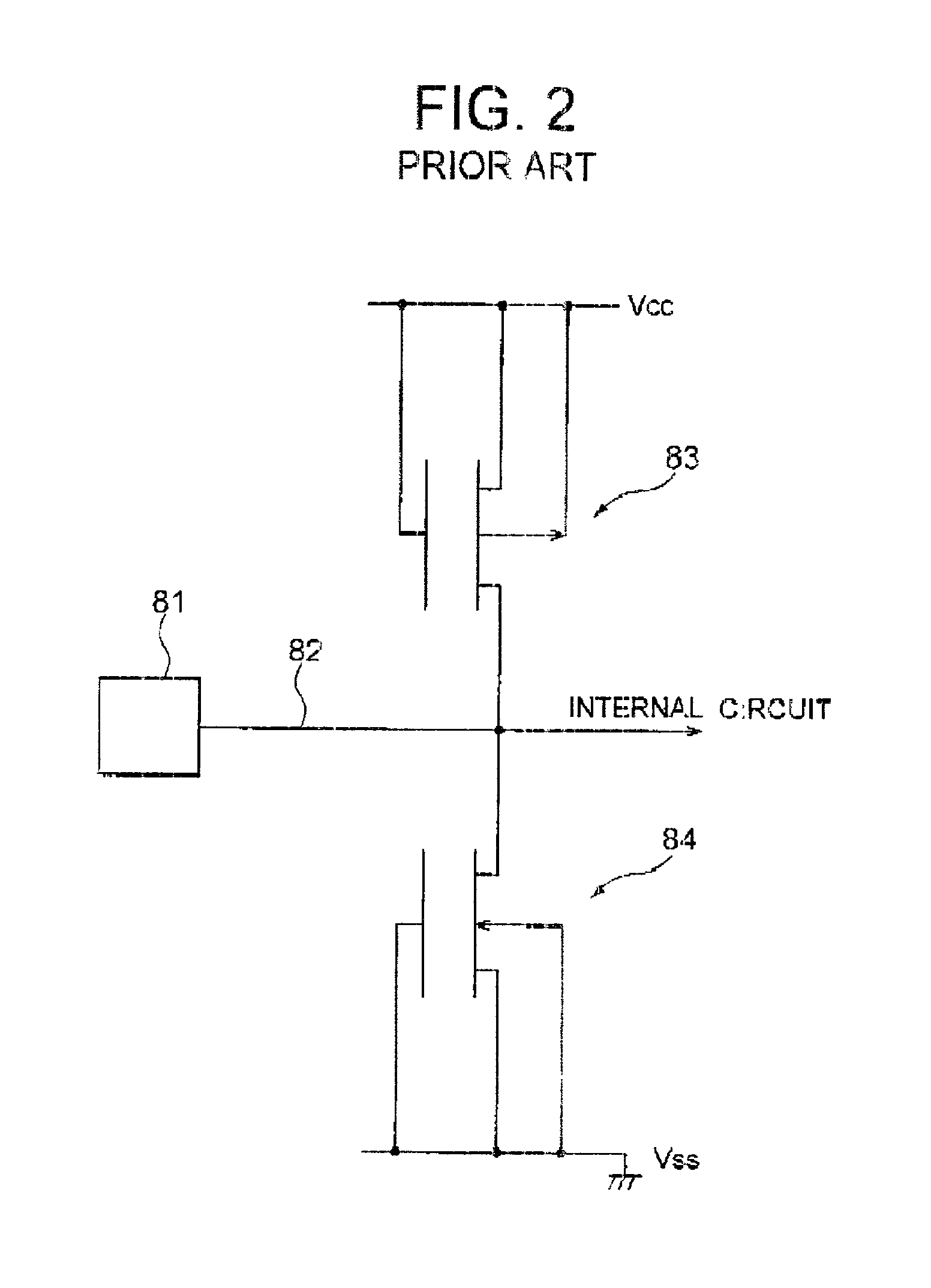Semiconductor device having an ESD protective circuit
- Summary
- Abstract
- Description
- Claims
- Application Information
AI Technical Summary
Benefits of technology
Problems solved by technology
Method used
Image
Examples
first embodiment
[0045] Now, the present invention is more specifically described with reference to accompanying drawings. Referring to FIG. 4, an ESD protective circuit (simply referred to as protective circuit hereinafter) according to the present invention includes a floating gate nMOSFET 104 connected between an input / output line (I / O line) 102 connected to an input / output terminal (I / O terminal) 101 and ground line VSS. The I / O line 102 is connected to a gate of a MOSFET in an internal circuit via a protective resistor 103.
[0046] The nMOSFET 104 includes a control gate 105 connected to the I / O line 102, a floating gate 106 connected to the ground line VSS via a floating gate resistor 107, and a backgate 108 connected to the ground line VSS via a backgate resistor 109.
[0047] Referring to FIG. 5, another protective circuit according to the first embodiment is similar to the protective circuit of FIG. 4, except that a floating gate nMOSFET 104a is connected between the I / O line 102 and the ground ...
second embodiment
[0065] Referring to FIG. 9, a protective circuit according to the present invention is connected between a pair of I / O terminals 21 and 22, which are applied with different source voltages.
[0066] In FIG. 9, a first I / O line 22 is connected to the first I / O terminal 21, and connected to the internal circuit via a resistor, whereas a second I / O line 24 is connected to the second I / O terminal, and to the internal circuit via a resistor.
[0067] The protective circuit includes a first floating gate nMOSFET 25 and a second floating gate nMOSFET 26, the source / drain paths of which are connected in parallel between the first I / O line 22 and the second I / O line 24. The first floating gate nMOSFET 25 has a control gate 45 connected to the first I / O line 22, and a floating gate 46 connected to the ground line VSS via a floating gate resistor 27. The second floating gate nMOSFET 26 has a control gate 47 connected to the second I / O line 24, and a floating gate 48 connected to the ground line VSS ...
fourth embodiment
[0069] Referring to FIG. 11, the present invention is such that the present invention is applied to output buffers. More specifically, the protective circuit of the present embodiment includes a floating gate pMOSFET 36a and a floating gate nMOSFET 36 connected in series between the VCC line and the ground line VSS. An output terminal 34 is connected to an output line 35, which is connected to the node connecting the gloating gate pMOSFET 36a and the floating gate nMOSFET 36.
[0070] The control gates 37a and 37 of both the floating gate pMOSFET 36a and the floating gate nMOSFET 36 are connected together and also to the output line 35. The floating gates 38a and 38 of both the floating gate pMOSFET 36a and the floating gate nMOSFET 36 are connected together of an output signal line 39 from the internal circuit. The backgate 41a of the floating gate pMOSFET 36a is connected to the VCC line via floating gate resistor 42a, whereas the backgate 41 of the floating gate nMOSFET 36 is connec...
PUM
 Login to View More
Login to View More Abstract
Description
Claims
Application Information
 Login to View More
Login to View More - R&D Engineer
- R&D Manager
- IP Professional
- Industry Leading Data Capabilities
- Powerful AI technology
- Patent DNA Extraction
Browse by: Latest US Patents, China's latest patents, Technical Efficacy Thesaurus, Application Domain, Technology Topic, Popular Technical Reports.
© 2024 PatSnap. All rights reserved.Legal|Privacy policy|Modern Slavery Act Transparency Statement|Sitemap|About US| Contact US: help@patsnap.com










